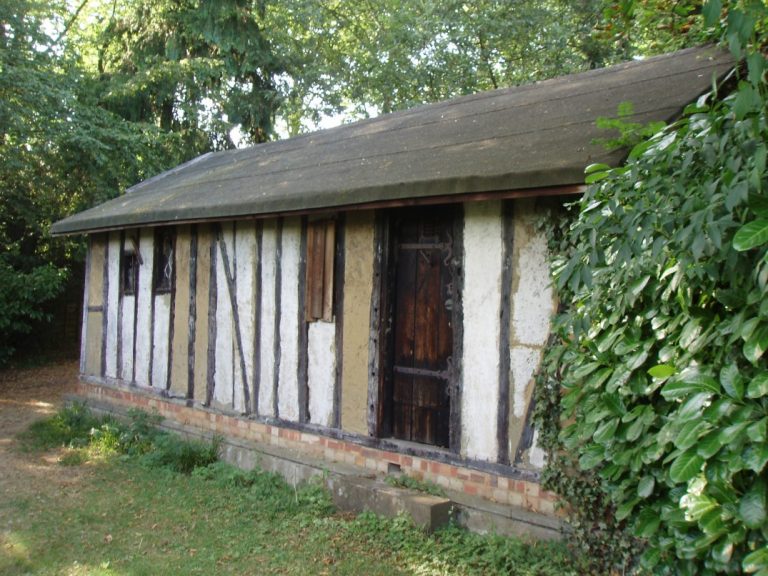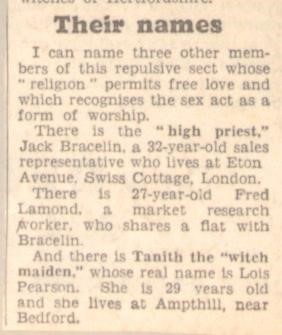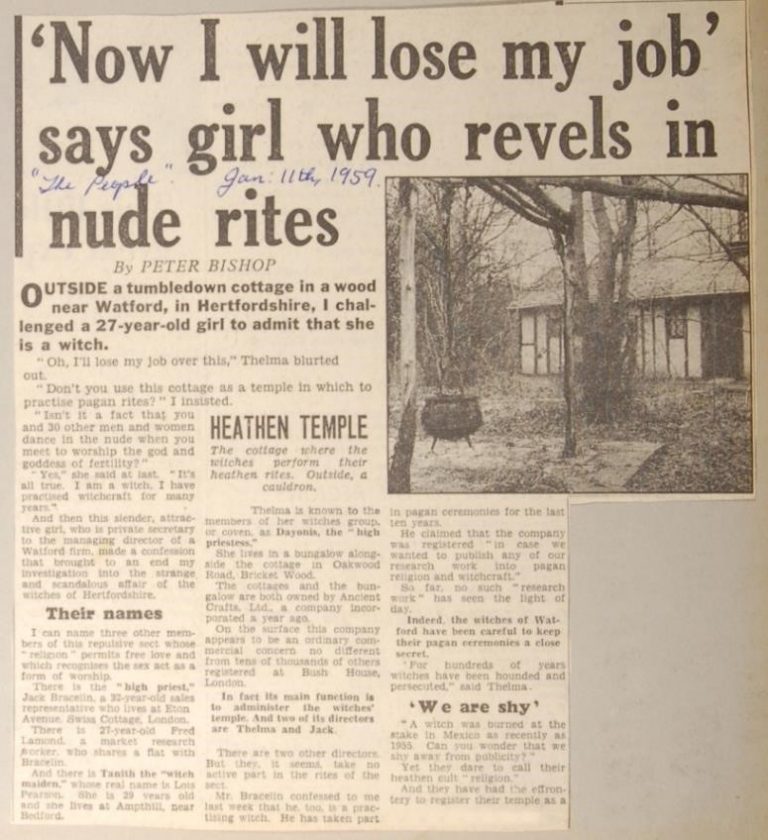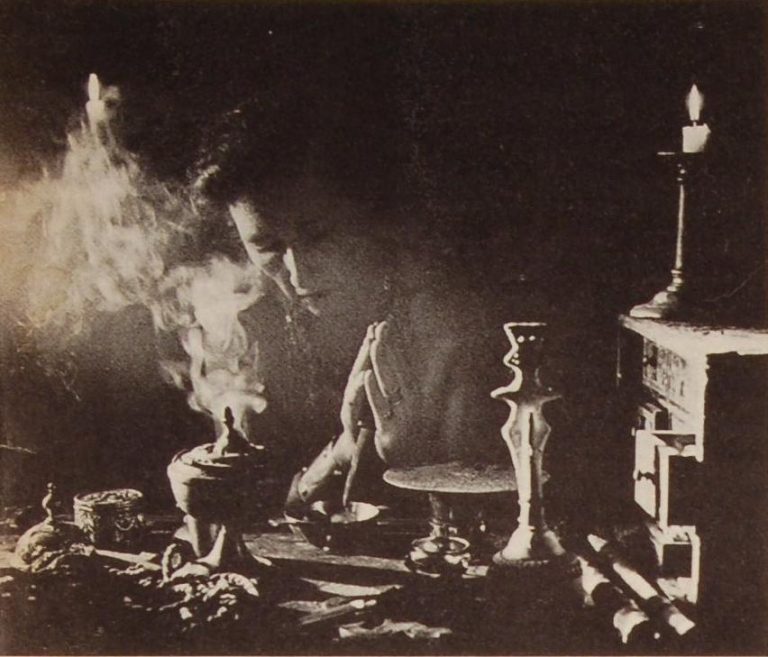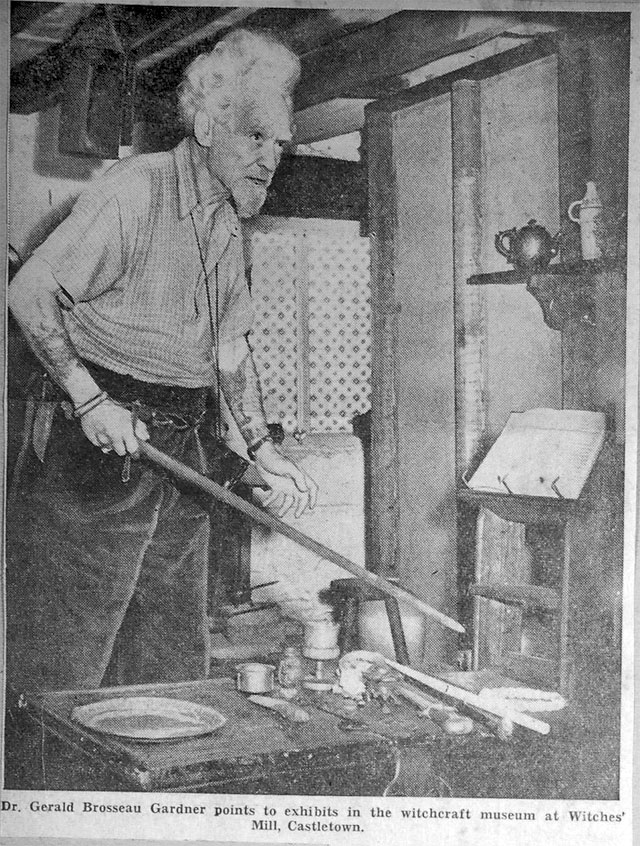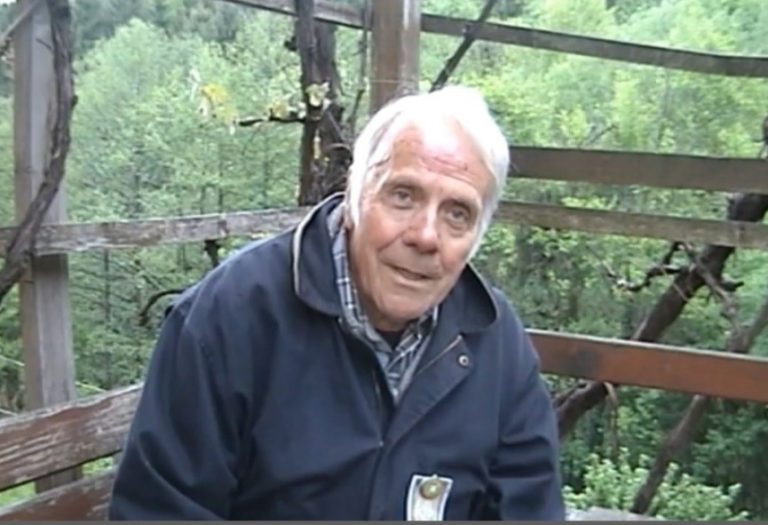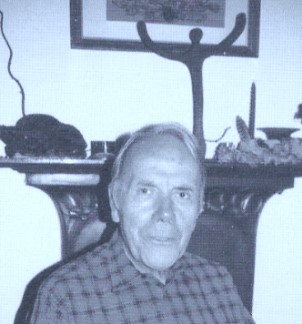Remembering Frederic Lamond: born July 5, 1931; died May 24, 2020
Nothing marks the passage of time like the loss of an elder. It was not THAT long ago that British witches gathered together at the Five Acres club. Among them was a gentle mentor named Gerald Gardner, and Fred Lamond was part of the coven. Perhaps the last Priest alive who worked directly with Gerald, Fred Lamond passed from this lifetime on 24 May 2020.
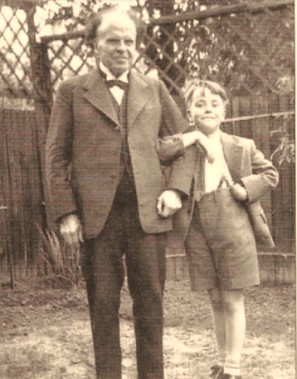 Born in 1931 in Prague, Frederic Lamond was educated at Cambridge University and the University of Chicago. He was an economist, a market researcher, a computer consultant, lecturer, author, husband, father, friend to many — and a witch. Born an only child, he was raised by his maternal grandmother, and survived the holocaust by escaping from Czechoslovakia and moving to Switzerland. According to the Jerusalem Post, his grandmother married a famous pianist, also named Frederic Lamond, who adopted young Fred.
Born in 1931 in Prague, Frederic Lamond was educated at Cambridge University and the University of Chicago. He was an economist, a market researcher, a computer consultant, lecturer, author, husband, father, friend to many — and a witch. Born an only child, he was raised by his maternal grandmother, and survived the holocaust by escaping from Czechoslovakia and moving to Switzerland. According to the Jerusalem Post, his grandmother married a famous pianist, also named Frederic Lamond, who adopted young Fred.
Fred also lived in England, as well as Austria, and the USA (California, Philadelphia, and even New Jersey!)
Fred and the Craft
How did Fred discover the Craft? He tells the story in his insightful book Fifty Years of Wicca:
“The English anthropologist Gordon Rattray Taylor’s book 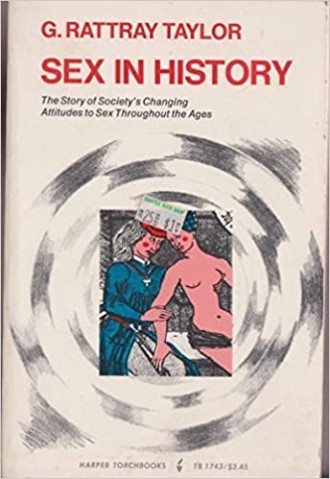 Sex in History alerted me to Margaret Murray’s theory that the mediaeval witches were not a mere figment of Inquisitors’ sadistic imaginations, but the survival of a country Earth Mother religion.”
Sex in History alerted me to Margaret Murray’s theory that the mediaeval witches were not a mere figment of Inquisitors’ sadistic imaginations, but the survival of a country Earth Mother religion.”
“So I started looking for books on witchcraft, and it did not take me long to find Gerald Gardner’s Witchcraft Today. For all his presentation of witchcraft as an innocuous survival from the past, it contained enough hidden cues to ring all my spiritual bells.”
After reading Witchcraft Today, Fred wrote to Gerald and soon afterwards received a reply from GBG inviting Fred to his home in June of 1956.
“…Gerald was already under pressure from the coven not to invite people on his own initiative, and had to discuss matters with the coven before issuing an invitation. The summer intervened and it was in September or early October that I was invited to meet the coven just before their next meeting. I then asked if I could bring with me Jacqueline, a friend from the Progressive League with whom I had often discussed our common interest in witchcraft. This was granted and so we both met the whole coven before their October, November and December 1956 meetings. These meetings took place at Gerald’s Holland Park flat. We would interact with the coven socially during the early part of the evening, and would leave when they wanted to start their circle. It was during the December meeting that Jack Bracelin told Jacqueline and me that we had been accepted by the coven and would be initiated at the February Eve 1957 sabbath if we accepted, which we did. We were then given copies of High Magic’s Aid to read, especially the description of a witch initiation, to check that ritual nudity and scourging didn’t freak us out, which it didn’t.[1]
On or near the night of the February Eve in 1957, at the Witches’ Cottage in Bricket Wood, Fred explained that both he and Jacqueline were initiated into the coven, with Fred being initiated by Dayonis, since Doreen was not present that evening. Fred fondly remembered that Dayonis in her younger years had “elvish features and looked as if she had come straight out of an Arthur Rackham drawing.”
This took place just six weeks before the coven split into two factions, with the older members leaving with Doreen and the younger members staying with Gerald. Fred was one of the members who stayed, and he commented that had it not been for Gerald Gardner, he would not have been involved with the Craft at all…
He also explained “…my initiation by [Dayonis] had created a strong spiritual bond and I decided to go where she went.” [2]
The Witches’ Cottage, covenstead to Bricket Wood.
There were eleven members of the coven before the split. Doreen’s coven lasted less than a year, but Gerald’s Bricket Wood coven continued to bring in new members.
“This break up aside, it was expected that members regularly come to all meetings, except in cases of illness or business travel.[3]
A year later, in early February of 1958, Fred Lamond was raised to Second Degree, on the same night that Lois Pearson (Bourne) was initiated. When Dayonis left England, Lois took on the role of High Priestess of the coven.
An Adventure at the Coven!!!
After receiving some rather disparaging press coverage which “outed” several coven members, the witches decided to go on the offense and voluntarily provide an interview with a rival paper, The People, to explain what witches really believe. If The People ran their story first, the other story might seem “old news” and be canceled.
Fred was one of the coven members who volunteered to step forward and expose his identity to the press in support of this effort. However on January 11, 1959 – instead of running the interview as the coven intended, The People ran yet another disparaging piece about the “heathen temple” with a somewhat negative slant, — and again the names and addresses of coven members were published.
There was a pleasant upside to the negative press the coven received that day.
One of the newspaper’s readers saw the article and became upset that they would say such negative things about witches. He wrote to the paper to complain, and rather than respond to the letter, the newspaper passed it on to Gerald’s coven. That reader was Zachary Cox.
Zachary Cox  |
Jack Bracelin later leaked a rumor to the press that the coven had disbanded so that reporters might finally leave them alone. Fred speculated that this is why others became the focal point for publicity, so that the coven could get some well-deserved privacy.
“This explains why after Gerald’s death it was Eleanor Bone and Patricia Crowther who carried the torch of publicity for Gardnerian witchcraft, and not the older Bricket Wood coven.” [4]
Eleanor Bone had told Gerald that she had already been initiated by “hereditary witches” in Cumbria, yet Gerald wanted her to also be initiated into Bricket Wood and he proposed this to the group. More mature than the other coveners, and perhaps reminding them of Doreen, Eleanor was flatly rejected. Fred tells the story…
Eleanor “Rae” Bone 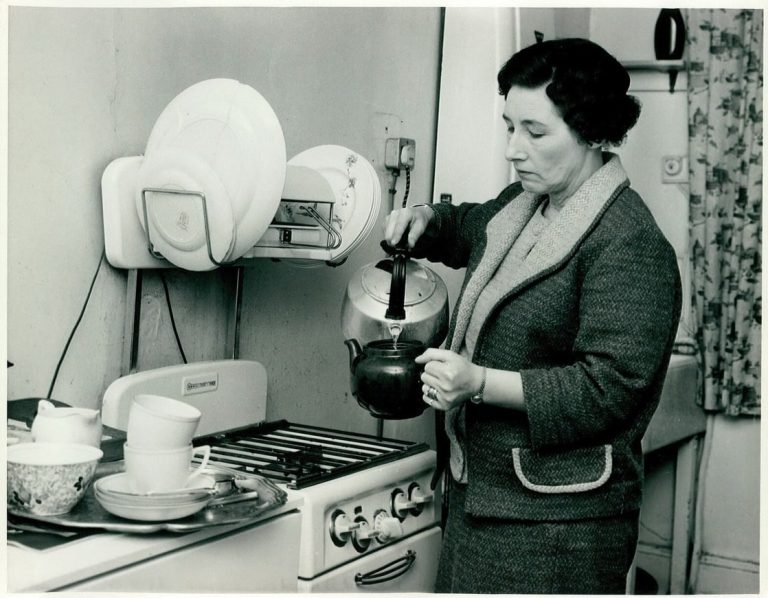 |
“Gerald Gardner was sending applications for the Craft to my coven’s HPS and HP with instructions to initiate them a.s.a.p. Most of them we did after a decent interval, but one woman whom I will not name grated on us so much with her personality that we flatly refused to have her in our coven. On Gerald’s insistence, one of us finally gave her 1* in a private ceremony. Gerald then took over her training and within a month had given her 2* and 3* and installed her as the HPS of a new line.” [5]
“If the degrees were supposed to represent stages in spiritual development, I felt this accelerated procedure made a mockery of them.” [6]
When Eleanor Bone came to visit us, however, we felt we could not circle with her. This was no reflection on her sincerity, but simply that she was substantially older, and her reserve as the responsible matron of a nursing home clashed with the exuberant gaiety of existing coven members.[7]
“…the coven rule was that they must unanimously agree to a new member. In one case, we refused to accept a woman because her energetic vibrations simply did not fit with ours. Later…she became the great-grandmother of three-quarters of today’s English Gardnerians.” [8]
Fred’s First Love: Discovering the Goddess
Fred recalls the tale of his first love, which he felt was his first encounter with the Goddess Aphrodite. Regarding a social event in his younger years, Fred tells us:
“I found myself stuck with a girl of Rubenesque proportions whose conversation was as thick as her thighs, and whom it required the dexterity of a tank commander to manoeuvre around the dance floor. At midnight, I was prepared to call it quits when a group of fellow students suddenly appeared from a private ball with some local girls in tow. One of them, Mary, was unaccompanied so I danced with her for an hour before taking her home. She was as light, graceful and witty as my previous companion had been thick. When I awoke the next day, I was madly in love. One week and three dates later, she returned my love passionately.” [9]
Why is this story important?
Fred felt that his encounter with Mary, had opened his eyes to the concept of the Goddess. That is what propelled him to read the aforementioned book, Sex in History, which led to Margaret Murray, which led to Gerald Gardner. (Mary, where ever you are, we all owe you a great big Thank You!) In his interview with Far Out magazine, Fred explained his first encounter with the Goddess:
“I felt that if this had happened to me it must have happened to other people, so let’s find them so that I can worship her in common with others.”
Fred meets Alex Sanders
Fred remembers his first meeting (1968) with Alex Sanders with mixed emotions. It seems Alex lectured for over an hour on his Craft resume, at times stretching the truth.
“He described at various times three different versions of how he had come into the Craft, including the story of his initiation by his grandmother at the age of six on the kitchen floor.”
Fred and Gillian 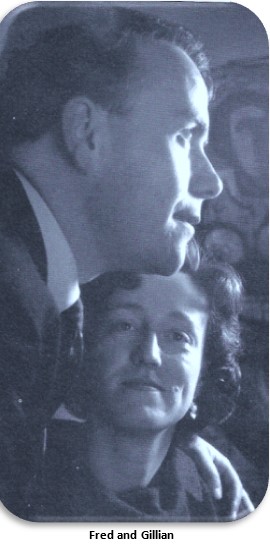 |
“He described an open air ritual he and his coven had performed . . . which had been watched by ‘30 000 people’. Maxine and the other initiates wriggled uncomfortably: ‘Perhaps not quite as many, Alex!’ they said.” (Fred cited the actual number, as he later learned was probably about 30 people passing by walking their dogs.)
“He did not know of the Bricket Wood coven and thought Rae Bone’s were the only Gardnerian covens in the London area: since we had disclaimed being her members, we couldn’t be genuine Gardnerians.”
“I managed to get a question in, commenting on the similarity of his rituals with those of the Gardnerian Book of Shadows. He acknowledged this but maintained Gerald had got them from him, and that he had been practising the Craft long before Gerald.”
“In the last half-hour of his second monologue Alex talked about his experiences of ritual magic. His voice became sadder and less self-assured as he said: ‘I once spent a week doing the Abra-Melin ritual’ (to achieve the ‘knowledge and conversation of the holy guardian angel’ in Aleister Crowley’s sonorous words) ‘but I was probably insufficiently purified beforehand, because I nearly went mad!’ You can cut out the ‘nearly’ I thought to myself.”
“Whatever liberties Gerald had taken with the factual truth Alex trumped him in spades…” [10]
As the evening between the Lamonds and the Sanders came to a close, Fred’s wife (Gillian) made an excuse to cut the meeting short, and in the car told Fred “I never want to meet that man again! …such people are dangerous!” (A view shared by Gerald, Doreen, Eleanor, Patricia and others…)
Fred and Magic
Fred felt that some oathbound things might best be shared with other pagans outside the Tradition, comparing it secrecy to that of a secret society rather than a religion. But magic?
| Magic is
– like electricity or gas – inherently dangerous and has to be handled with care. |
“Magic is a different matter. It is – like electricity or gas – inherently dangerous and has to be handled with care. Ego inflation, going nuts and – in the case of spellcasting – misusing it for selfish or harmful ends to others: the dangers are well known! It is because Wicca is a magical and spellcasting craft that it is secret and oathbound. Leave out the magic and spellcasting, and the whole secrecy issue – except about other members’ civilian identity – becomes rather silly and pretentious.”
“Gerald Gardner used to say we should concentrate on developing our spellcasting skills with the help of the MG and HG. If we worked on helping others, our spiritual development would happen by itself, and this is what I have found in my life.”
Fred’s View of the Early Craft
Sabbats
Many of today’s pagan practices date back to the Craft, either because that is how Gerald passed them on, or because it just organically grew that way
“We had only four seasonal festivals in his time: Candlemas, Beltane, Lammas and Halloween. These were parties and we were allowed to invite like-minded, but uninitiated friends. Midsummer and Jul (mid-winter) were celebrated as magical rituals by the coven where we turned the wheel of the year, so that the sun would continue on its heavenly course. These and all full moon rituals were closed: during the latter we worked magic to heal friends or to help them.” [11]
| The most important festival in the witch year is the springtime fertility festival, when young couples would make love in the fields to stimulate crop growth. |
During the same session I asked Gerald why we celebrated the crossquarter days instead of the solstices and equinoxes. ‘‘You can celebrate these if you want to’’, said Gerald, ‘‘but it would be at odds with the climate in which we live. You see: the most important festival in the witch year is the springtime fertility festival, when young couples would make love in the fields to stimulate crop growth. This could only happen when the nights had become warm enough to sleep out of doors.[12]
‘During the spring fertility festivals a lot of young women, especially the May Queen, would become pregnant and their children would be born nine months later. That was therefore the right time to celebrate the birth of the new solar year: shortly after the winter solstice in the Mediterranean, but not until the beginning of February in Southern England, Holland and Germany’. With these words Gerald confirmed that the seasonal festivals are intended to make us more aware of the cycle of seasons in nature, and that their dates should therefore be determined by the climate in which we live – a lesson that witches in North America, South Africa and Australia should take to heart![13]
Like many covens today, when Fred was a member they circled on Saturday nights, so that people could stay late, or spend the night. Describing the Craft, Fred stated:
“The initiation rituals were always the same, for each degree. The same was the case for the opening and closing of the circle. Everything else was improvised and adapted to the purposes of the spell.” [14]
| Fred Lamond, Far Out Magazine |
How did Fred see the Craft?
Fred Lamond 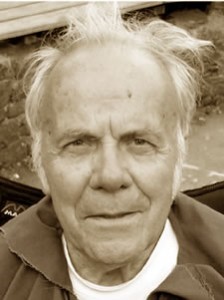 |
Fred described the Craft as:
“Wicca is a craft in the mediaeval sense: a skill, that of casting mental spells to ask the Goddess and Horned God to help us and others.”[15]
“I have … lived through almost the whole of Wiccan history and am probably – since the death of Doreen Valiente – the oldest continuing practising Wiccan alive today.”[16]
| They called us “Gardnerians” pejoratively to distinguish us from “true” hereditary witches. |
Fred felt that there was a point where Gerald Gardner’s coven and the initiates downline from him were not recognised as true witches by the family traditions who thought that a true witch had to be born into a witch family. One in particular called Gerald’s people ‘Gardnerians’ pejoratively to distinguish them from ‘true’ hereditary witches. Fred felt that there were many bogus family traditions that people invented for themselves to get themselves accepted. But Fred did not care and he felt that the witchcraft taught by Gerald worked for him and the spells Gerald’s coven cast were remarkably effective.
How did Fred see the God and Goddess?
“The highly conservative power of Love, which seeks to maintain all living species and ecological equilibria just as they are at any given point in time, and is immanent in the genetically inherited instincts of all living species, including humanity. This is the power we invoke as the Goddess of Life and Love and her consort the Horned God of fertility, and which is also present in the many gods and goddesses of polytheistic ethnic religions.”[17]
How did Fred describe Gerald?
“… a kind unassuming gentleman with a fine crop of white hair and a white barbiche. He was an excellent raconteur with a good eye for human eccentricity and the occasional absurdities of daily life, and had a fine sense of humour. His friendliness and childlike enjoyment of life inspired love and affection in all who knew him… But for a man who was trying to revive the mysterious and awe-inspiring witchcraft tradition, I found him disappointingly lacking in charisma.”[18]
“He was an extremely lovable man. He was gentle, very humourous… completely unpretentious and you couldn’t help but love him. At the same time, he was a trickster. He had a very creative attitude towards factual truths.” [19]
Fred was at times somewhat critical of Gerald. He commented on what he considered Gerald’s attempt to make the Book of Shadows look older than it was, using the description “phoney archaisms”.
The oft-cited ‘discard any spells that did not work for you and replace them with your own’ comes to us not from Gerald directly, but rather through Fred’s own lens of Gerald, recounting what he felt Gerald had taught.
Forty-eight years younger than Gerald, Fred referred to Gerald as “an old man in a hurry” meaning that Gerald’s actions were driven by his own awareness of being in his last few years. Fred described Gerald as an “old fraud” and “theologically illiterate.” [20] He described Gerald as not being “ritually creative.” In one of his articles in Green Egg (reprinted as Green Egg Omelet) he likened Gerald to Yoda in the Empire Strikes Back, being easily underestimated.[21]
Comparing Gerald to Idries Shah, Fred commented:
“If I had met Idries before Gerald I would probably have sat at his feet for ten years or until he kicked me out…” [22]
“Gerald did not have charisma. He was a very lovable man, but he did not have charisma! And he did not have this aura of spiritual authority”.”[23]
Idries Shah 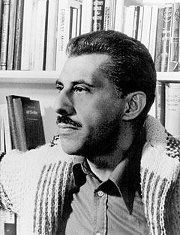 |
Fred speculated on Gerald’s reasons for his revival of witchcraft:
| “Gerald would tell us anecdotes about what happened in “Pre-Burning Times” and how Craft practice has been altered when it had to go underground.” |
“He knew that he did not have long to live and wanted to be reincarnated into a witches’ coven, but for that to be possible there had to be witches’ covens around after his death. So as time went on, he watered down more and more of the very sensible requirements for initiation in order to maximize the number of witches that were initiated.” [24]
“Gerald never gave us any direct instruction in witch religious concepts and spellcasting techniques. We learned spellcasting on the job in circle, and picked up myths and concepts from the rituals themselves, notably the wonderfully moving Charge of the Goddess. During the informal conversations that followed rituals within the circle, Gerald would tell us anecdotes about what happened in “Pre-Burning Times” and how Craft practice has been altered when it had to go underground.
That expression was, of course, a Geraldism. Since witches were never burned in England but hung during the brief 120 years when they were persecuted there…”
“But the anecdotes about a fictitious past were a mirror, a technique for implanting in our subconscious minds the ideas about what we are to do in the future as the social and intellectual climate became more tolerant.” [25]
Fred may have grown up doubting all religious leaders. In his book Fifty Years of Wicca Fred wrote that his grandmother had taught him that ‘‘All religious dogmas are lies!’’ Perhaps this applied to Gerald too, as Fred and his peers saw GBG as their sole portal to the ancient Witch Cult dating back to an unbroken line of stone-age cavemen priests (with athames).
Yet, when the chips were down, Fred stuck by Gerald.
Fred could have left the coven and went with Doreen. Charles Cardell also tried to recruit Fred and other members of Gerald’s coven. Fred reported he and others would not abandon Gerald “for whom we all had a great deal of affection for all his faults.”
There was likely no doubt in Fred’s mind that the only reason other witches today even know Fred’s name is because of his time together with Gerald.
For the first three decades of his Craft life, Fred circled only with Gerald’s coven. However, in 1986, after his first wife’s death, he began to experiment with other paths. He was welcomed by friends to join The Companions of the Rainbow Bridge (founded by Jean and Zach). He was also a member of the Children of Artemis, and the Pagan Federation. He did interfaith work and attended (with other pagans) the Parliaments of World Religions in Chicago in 1993, Cape Town in 1999 and Barcelona in 2004.
Fred and Hildegard 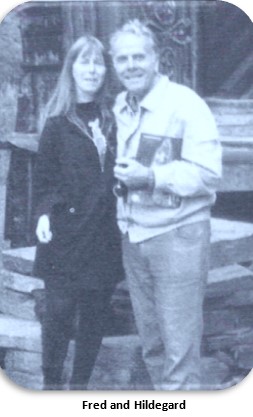 |
After his first wife Gillian died in 1986, Fred was invited by friends to join The Companions of the Rainbow Bridge (founded by Jean and Zach) and the London Iseum of The Fellowship of Isis. He was also a member of the Church of All Worlds, the Children of Artemis, and the Pagan Federation.
He did interfaith work and attended (with other pagans too!) the Parliaments of World Religions in Chicago in 1993, Cape Town in 1999 and Barcelona in 2004. (Fred & I – and John Belham-Payne – were at PWR/ 2004 when we represented PF and PFI. We were the only pagans from Europe and we joined the ‘Pagans from America’ – Morgana).
Robert…
Some may know Fred as Robert. Fred explains his use of the name…
When I was raised to 2* Margaret Murray’s theories on witchcraft were still very much in vogue, including that the Robin Hood legend referred to a coven of witches. As the name ‘Robin’ already belonged to another member of the coven I chose “Robert”, another name under which the Man in Black was called. The names “Robertson” and “Robinson” apparently originated from people conceived during a Beltane orgy with the assistance of the Man in Black.” 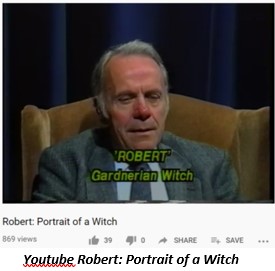
Especially interesting is Fred’s candid (as usual) interview entitled “Portrait of a Witch”. Released in 1991, at about 53 minutes into this interview, Fred mentioned that if mankind continues its assault on the ecosystem, that the Goddess might withdraw her protection of us, and unleash some type of virus. Interesting comment.
Fred was also a member of the Progressive League, founded by H.G. Wells in 1932 and others. It strove to unite progressive organizations to oppose fascism, and promoted pacifism, European federalism, world government, socialism, non-authoritarian education, nudism and free love.[26]
Besides many articles in Pagan publications, Fred authored:
- The Divine Struggle, published by Nemeton in California in 1990, and republished by Avalonia Books, Wales, in 2007.
- Religion without Beliefs, published by Janus Publishing, London, in 1997.
- Fifty Years of Wicca, published by Green Magic, Sutton Mallet, England, in 2004.
- Theologies of Immanence
- Witness to Wicca (unpublished manuscript) – (Boscastle Museum of Witchcraft archives)
[1] Witchfather, Philip Heselton
[2] Witchfather
[3] Fred Lamond, Steinkreis Interview, Theo Erlemann (1999)
[4] Fifty Years of Wicca
[5] Lamond, Gather – February, 1999
[6] Fifty Years of Wicca
[7] Ibid
[8] Lamond, Steinkreis Interview
[9] Fifty Years of Wicca
[10] Fifty Years of Wicca
[11] Lamond, Steinkreis Interview
[12] Fifty Years of Wicca
[13] Fifty Years of Wicca
[14] Fifty Years of Wicca
[15] Fifty Years of Wicca
[16] Ibid
[17] Fifty Years of Wicca
[18] Witchfather
[19] Lamond, Video Interview with Gavin Bone and Janet Farrar, 2010
[20] Fifty Years of Wicca
[21] Lamond, Pioneers of the Pagan Revival: Gerald Brosseau Gardner, Green Egg Vol VII 69 (Ostara 1975)
[22] Fifty Years of Wicca
[23] Witchfather
[24] Fifty Years of Wicca
[25] Lamond, Pioneers of the Pagan Revival: Gerald Brosseau Gardner, Green Egg Vol VII 69 (Ostara 1975)
[26] Witchfather

